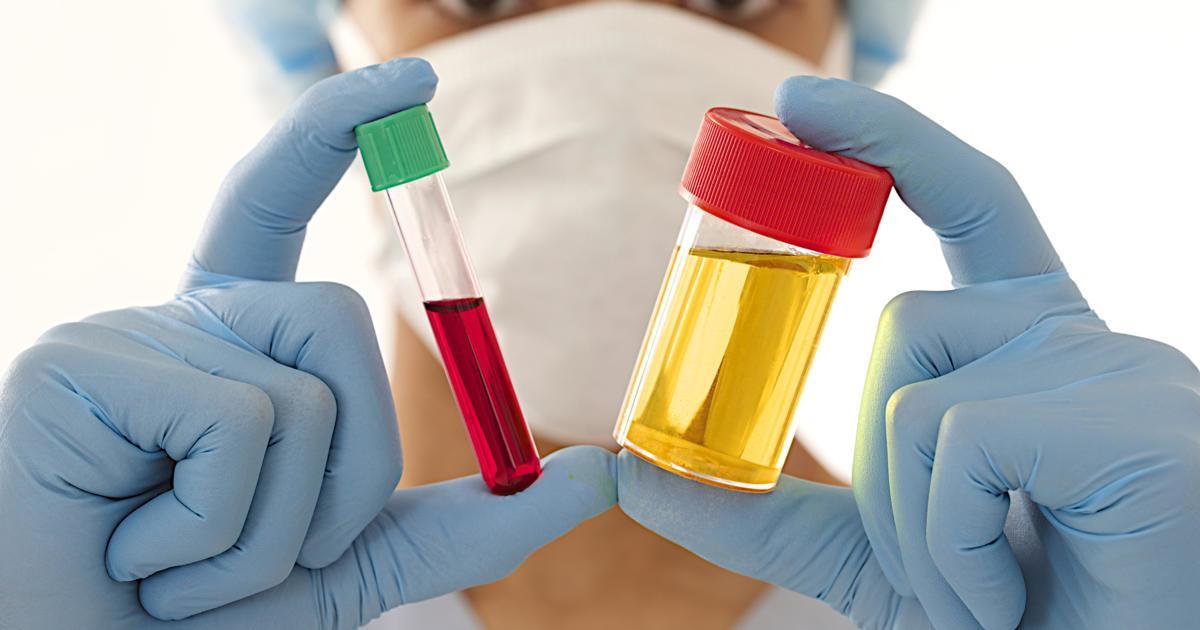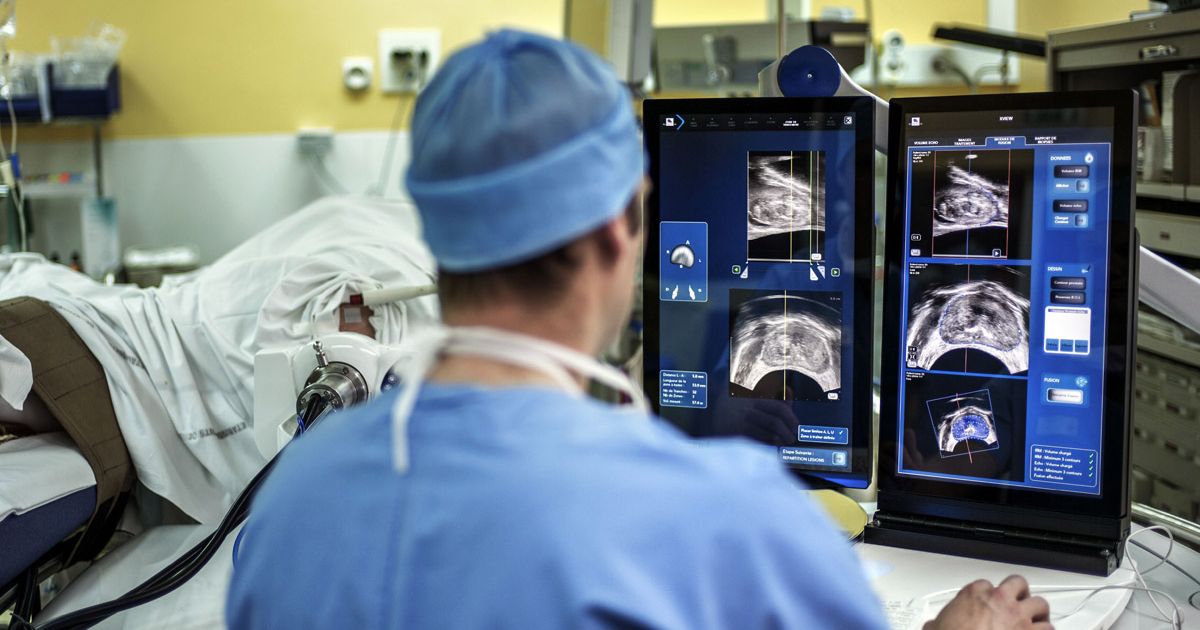Causes, Symptoms, And Treatments Of An Enlarged Prostate
An enlarged prostate, otherwise known as benign prostate hyperplasia or BPH, is the most common prostate problem in men over the age of fifty. A man’s prostate begins to grow at the age of twenty-five. According to the American Urological Association, over one-half of men over the age of sixty will have developed an enlarged prostate and by eighty-five the risk increases to ninety percent. Discover the causes, symptoms, and treatments of an enlarged prostate now.
What Is BPH?

BPH is a noncancerous enlargement of the prostate that blocks the flow of urine from the bladder through the urethra. It develops when prostate cells gradually multiply and cause the gland to grow, which puts pressure on the urethra. When the urethra becomes too narrow, it causes the bladder to contract more forcefully to push urine out of the body, causing the bladder muscle to strength and become so sensitive that it contracts even when there is only a small amount of urine in the bladder. This causes the need to urinate frequently.
Symptoms To Look For

A frequent need to urinate at night is the main symptom of an enlarged prostate. The urgency to use the bathroom will eventually cause a disruption to a man’s daily routine. Other symptoms may include a weak or slow flow of urine, the feeling that the bladder is not completely empty after urination, difficulty starting and continuing urinating, the urgency to go often, waking in the middle of the night to go, a stream of urine that starts and stops, straining to urinate, dribbling of urine, and the need to go again minutes after finishing.
Complications

Serious problems may develop when the bladder is unable to empty completely. Urinary tract infections are the most common complication of an enlarged prostate. For many men, this may be the first sign of a problem. Other complications of BPH include blood in the urine, bladder stones, incontinence, and the inability to urinate. The complete and sudden lack of ability to urinate is an emergency medical condition that needs to be treated right away. Bladder and kidney damage may also be a result of BPH.
What Causes It?

According to the Urology Clinics of Northern Texas, there are two main reasons why a man’s prostate becomes enlarged. The first is aging and the second is because of the presence of the testes. BPH is a common yet misunderstood process of aging. A man’s prostate grows as he ages; however, the reason is unknown. BPH may develop from the influence of the male hormone testosterone, which causes prostate cells to grow and proliferate, resulting in an increase in the size of the prostate. A typical man’s prostate is about the size of a walnut. However, men with BPH may have prostates as large as a grapefruit.
Risk Factors

Similar to the causes and complications associated with BPH, there are numerous risk factors that can contribute to a man developing an enlarged prostate. As one of the main causes, aging is also a critical risk factor for men, as an enlargement of the prostate gland rarely causes signs and symptoms in men under the age of forty, compared to one-third of men experiencing moderate to severe symptoms by the age of sixty, and half of the men by the age of eighty experiencing full-blown symptoms. Other risk factors include a family history of prostate problems, especially if a man’s father or brother has experienced BPH before, diabetes and heart disease due to the use of beta blockers, and lifestyle choices, such as obesity can increase a man’s risk as well.
When To Seek Help

Urologists use a set of questions developed by the American Urological Association to determine if a man’s symptoms from BPH require treatment. Here are a few questions to ask before seeking help: How severe are the symptoms? Do they disruptive to normal daily activities? Are they worsening? Do the symptoms affect the quality of life? How long have the symptoms been present? Is it finally time to seek treatment? Are the risks associated with treatment worth it?
Treatment Options

Treatment of an enlarged prostate may range from minimally invasive office procedures to surgery or medication. They will depend on a man’s age, overall health, and the size of the prostate gland. A man in his eighties may require the immediate treatment of surgery, while a man in his fifties may choose to take medication. The American Urological Association states that surgery is the best method for reducing symptoms; however, it has more risks than other treatments and may be harder for an older male to recover from.
The Different Types Of Surgeries

Fortunately, there are numerous surgeries that can be performed to help reduce symptoms of BPH or treat the problem altogether. The different types of surgeries available that help BPH includes transurethral resection of the prostate (TURP), transurethral incision of the prostate (TUIP), a prostatectomy, and various types of laser surgery. TURP is the most common type of surgery done for an enlarged prostate and has proven to reduce the greatest amount of symptoms in a patient. Requiring a short recovery time and is less traumatic than open surgery, TURP involves an electrical loop that cuts tissue and seals blood vessels, and only the tissue growth that is pressing against the urethra is removed to allow urine to flow more easily.
TUIP is another common procedure done to help relieve symptoms of BPH and involves making cuts in the prostate instead of removing the affected prostate tissue, as these cuts reduce pressure on the urethra, resulting in easier urination. Symptom relief is slower than TURP, but patients have less side effects with TUIP than TURP, are able to go home the same day, and only wear a catheter for a day or two.
Surgeries Continued

As previously mentioned, laser surgery is a viable option for helping to treat an enlarged prostate. Laser surgery is an effective procedure that uses a high energy vaporizing laser to destroy prostate tissue and is typically done under general anesthesia and may require hospitalization. Laser surgery relieves symptoms of BPH instantly, yet some men may experience painful urination for a few weeks after. Generally, this procedure results in less blood loss compared to other types of surgeries.
Open Prostate Surgery or a Prostatectomy is used when a transurethral procedure cannot be performed, therefore, open surgery involving an incision into the abdomen is used instead, allowing the surgeon to remove damaged tissue from the prostate. An open prostatectomy is generally performed when the prostate gland is significantly enlarged, the bladder is damaged, and there is evidence of bladder stones or the urethra is narrowed. With this procedure, the inner part of the prostate is removed and is done under general or spinal anesthesia, and recovery can range from a few weeks to several months.
Minimally Invasive Treatments

Minimally invasive procedures can be done in a doctor’s office and do not involve surgery. Transurethral needle ablation or TUNA is a procedure that destroys prostate tissues to relieve symptoms and increase urine flow by heating prostate tissue with high-frequency radio waves inserted by needles directly in the gland. A stent, or a tiny metal coil, can be inserted into the urethra to widen it and keep it open to allow proper urine flow. Many doctors do not like using stents because a stent can shift positions and worsen the condition.
Minimal Invasive Treatments Continued: TUMT

One of the most popular methods of minimally invasive treatments that are used is transurethral microwave thermotherapy or TUMT. This form of therapy treats mild to moderate blockage and helps to reduce some of the serious symptoms of BPH including urinary frequency, urgency, straining, and intermittent flow, but does not correct any bladder-emptying issues. The procedure is done with computer-regulated microwaves that heat portions of the prostate to destroy the affected tissues, where a cooling system helps to protect the urethra’s walls during treatment.
This type of therapy is usually done in a doctor’s office and requires only topical anesthesia and pain medications. There are some side effects associated with this procedure though, such as painful urination for a few weeks, as well as temporary urgency and frequency of urination. Unfortunately, many men may need to have the procedure redone as their symptoms either return or do not get any better.
Medications

There are two main types of medications that are approved by the Federal Drug Administration for treating an enlarged prostate. Alpha blockers are available to treat BPH by relaxing the muscles surrounding the bladder and prostate so urine can flow easier. Symptoms usually improve in a day or so and are most effective for men with normal to moderately enlarged prostate glands. Five-alpha-reductase inhibitors work by shrinking the prostate gland by decreasing amounts of the hormone dihydrotestosterone or DHT. Urine flow is typically improved after three months.
Natural Remedies

According to a Japanese study, stinging nettle root has hydrophobic properties similar to steroids that inhibit the tissue surrounding the prostate gland and suppress the growth of too many prostate cells. A study published in Nutrition Research and Practice found that pumpkin seed oil reduced symptoms of BPH within three months and maximal urine flow was significantly improved after six months. A 2009 study found that supplementing with saw palmetto was able to improve urinary dysfunction and alleviate overactive bladder symptoms in men with BPH.
Tips For Dealing With BPH

Harvard Medical School recommends four tips for relieving BPH. The first is to reduce stress by exercising or practicing meditation as men who are tense may need to urinate more frequently. Do not rush any trips to the bathroom and take the time to completely empty the bladder. This will cut down on the number of trips to the bathroom. As some medications may cause frequent urination, talk to a doctor about adjusting dosages or changing prescriptions. The last tip is to avoid drinking too close to bedtime and cutting back on caffeinated beverages throughout the day.
